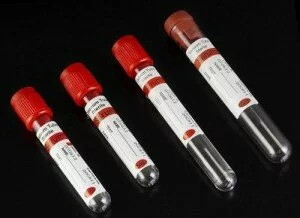A woman from South Dakota was apparently driving with a BAC of .708. While possible, it’s more likely that the test is wrong. We may never know the truth of this case because the report that appeared in the December 28, 2009 Rapid City Journal does not indicate if this blood test was whole or serum blood.
The report does indicate that the woman was taken to the hospital, so it is entirely possible that this is a “hospital” or serum test. If it was a serum test, the results are really not reliable enough to be used for courtroom purposes. And in a perfect world, assuming the test result is completely accurate and reliable, this serum result could still be as much as 25% too high when compared with whole blood testing.
Unlike hospital blood tests, nearly all forensic blood tests are whole blood tests performed using gas chromatography. This is because serum testing is significantly different than whole blood testing and significantly less reliable. This lack of reliability is attributable to the testing method. With serum testing, the solid portion of the blood is first removed by spinning the blood in a centrifuge. This artificially concentrates the alcohol that is left in the liquid, and it is the liquid that is tested.
One of the unique qualities of ethanol is that that after spinning it, the ethanol “follows” and stays with the water. Thus, once the solids have been removed, the remaining liquid contains an artificially concentrated amount of ethanol. Serum blood, therefore, contains more water per unit volume (milliliter) than does whole blood, because after centrifuging, more ethanol will be present in a milliliter of serum blood than in a comparative milliliter of whole blood.
The serum blood sample is usually then tested by the “enzymatic” method. Because of the many problems associated with serum testing, as described here and below, a hospital serum ethanol test is most often used as a clinical screening tool to determine if a patient has ethanol exposure at levels that might affect the course of treatment. While it is true that such medical determination requires a reasonably accurate result, the emphasis in the hospital setting is to obtain an approximate or qualitative result rather than a precise quantitative result.
Primarily because of the differences in the comparative volumes of water mentioned above, the alcohol content of whole blood is not of the same alcohol content of the serum portion of the blood.[i] Serum values are always higher than whole blood values. Consequently, in order to give the serum test result meaning, a reliable conversion factor must be employed.
On average, serum values are about 16% higher than whole blood. But it is not uncommon to see results that may be 18% to 20% higher, or more, in some cases.[ii] In fact, an authoritative medical journal found that the upper conversion range can be as high as 25% for a small percentage of the population.[iii] While there is scientific uncertainty over the exact proper conversion factor, the reported studies all indicate that serum values are significantly higher than standard whole blood values.[iv]
Assuming the result has some degree of reliability, a .708 is not impossible. An extreme example of acute tolerance was reported in a human patient in whom a maximum blood alcohol level of .78 g/dL was found. When the patient reached a level of .30 g/dL, she was, by clinical observations, sober.[v]
On the other hand, all bodily functions and abilities governed by the brain are impaired progressively. With acute intoxication (blood levels in excess of .40 g/dL), even autonomic functions governed by the medulla and the brain stem are affected. At these levels, there is considerable risk of death from depression of the respiratory centers.[vi]
While there is little doubt that by any measurement this South Dakota woman had a comparatively high blood alcohol level, all in all it’s fair to say that this is a misleading article. The reporter has done the same thing most jurors do, which is to say, she has accepted the test result without questioning it. What is most interesting is that the state laboratory personnel have done the same.
The article indicates as follows:
Dr. Robert Looyenga, who recently retired from the Rapid City Police Department’s forensic laboratory, told Sondreal that the highest blood-alcohol sample he tested measured .56 percent.
Sondreal’s research indicates that a blood-alcohol level of .40 is considered a lethal dose for about 50 percent of the population.
It is notable that there is no mention here of the possibility that the test result may simply be wrong.
[i] Newcomb v. State, 758 N.E.2d 69, 71 (Ind.App. 2001)
[ii] Edward F. Fitzgerald, Intoxication Test Evidence, §19:4 (2nd ed. 2003).
[iii] E.A. Hak, B.J. Gerlitz, P.M. Dermont & W.D. Bowthorpe, Determination of Serum Alcohol: Blood Alcohol Ratios, 28 Can. Soc. Forensic Science Journal, No.2 (1995).
[iv] N.K. Shajani, W. Godolphin, & B.A. Image, Blood Alcohol Analysis:Comparison of Whole Blood Analysis by Gas Chromatography with SerumAnalysis by Enzymatic Method, 22 Can. Soc. Forensic Science Journal, No. 4(1989).
[v] James C. Garriott, Pharmacology and Toxicology of Ethyl Alcohol, Garriott’s Medicolegal Aspects of Alcohol, Fifth Edition, pg. 29 (2008).
[vi] Id. at 30.











{ 5 comments… read them below or add one }
Driving with a blood alcohol level over the state’s maximum permissible blood alcohol limit. Unique Content
I am a criminal defense/DUI lawyer in SD and very familiar with the chemist and testing procedures utilized. In all likelihood there has not been a confirming test or retest of the blood sample. IF there is a confirming test it probably will not be done until the chemist is certain that the case will go to trial and then it will be conducted a day or two before trial. I agree with everything else which has been stated in your blog and would add the following. See the next comment.
Part II: Presently, SD utilizes 6 ml BD vacutainers. These tubes contain 15 mg of Sodium Fluoride (preservative) along with Potassium Oxalate (preservative). At full draw the amount of preservative in the blood sample will be approximately 0.25% of the sample. The NCCLS recommends 1.0%; thus the blood samples in SD contain an insufficient amount of preservative to prevent fermentation which can lead to the production of alcohol. This issue has become apparent in the last year. One case has been tried to a jury in SD by George Johnson, Gregory SD, a premier SD DUI attorney and resulted in a Not Guilty verdict. Dr. Robert Lantz, Rocky Mtn. Labs Ft. Collins, Colo. was the defense expert in that case. In all likelihood, the blood sample in the Rapid City case will also contain an insufficient amount of preservative. This could also explain the extraordinary high BAC.
Re: Michigan DUI Help – New comment requires moderation on: Woman Apparently Drives With .708 Blood Alcohol Content
Approve
Re: Michigan DUI Help – New comment requires moderation on: Woman Apparently Drives With .708 Blood Alcohol Content
Approve
{ 1 trackback }